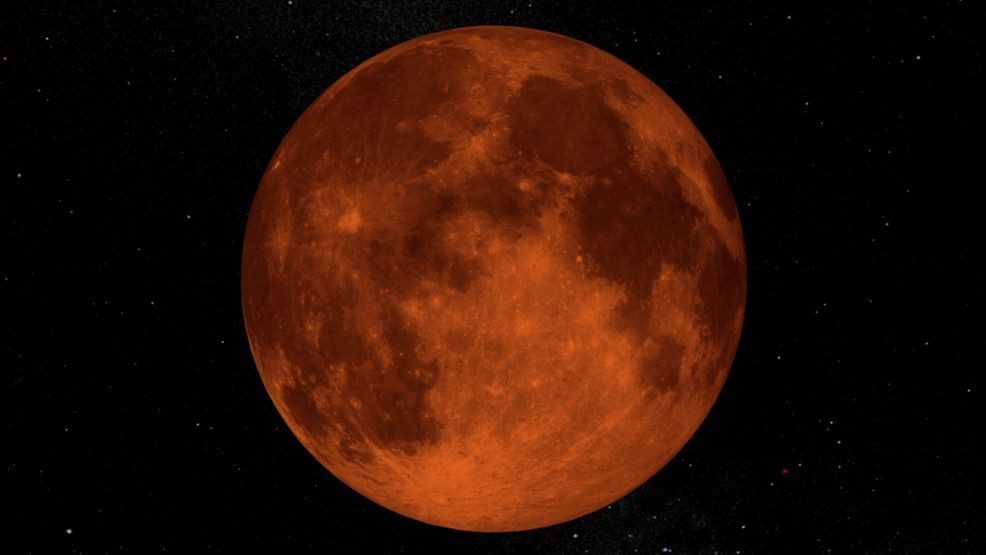
SEATTLE — During the winter and the early spring months, residents of western Washington may find it challenging to enjoy clear skies in the Pacific Northwest. However, if the clouds part, they have a plethora of exciting astronomical events to look forward to.
In the upcoming month, avid stargazers can witness a variety of celestial phenomena, including eclipses, planetary formations, and other captivating events.
Planetary Parade
Seven planets are currently aligning in what is commonly referred to as a planetary parade, although some may be tricky to spot without assistance.
This celestial gathering occurs when multiple planets align closely in the night sky. They don’t form a perfect line but cluster together on one side of the sun.
Such astronomical alignments are relatively frequent, occurring at least once every year, depending on the number of planets involved. However, having all seven visible at once is a rare treat.
NASA notes that a visible grouping of four or five planets happens every few years. A recent parade occurred last June, showcasing two planets without the need for any equipment. In January, six planets were visible, with four easily seen by the naked eye, and currently, a faint Mercury has joined the mix.
As of this month, Venus, Mars, and Jupiter are visible to the naked eye along with a dim Mercury and Saturn low on the horizon, making them somewhat harder to detect. With binoculars or a telescope, Uranus and Neptune can also be observed.
To catch a glimpse, venture outside on a clear night after sunset. The planets will shine brighter than the stars, with Mars appearing as a reddish-orange dot. For guidance, stargazing apps can indicate where to look.
Observers will see these planets gradually moving out of view as spring progresses.
Lunar Eclipse
The night between March 13 and 14 presents an excellent opportunity to watch a striking full moon transform during a lunar eclipse.
Lunar eclipses occur exclusively when the moon is full. When Earth is positioned directly between the sun and the moon, it casts its shadow across the moon’s surface.
This alignment dims the bright full moon, casting a reddish hue for several hours.
Unlike solar eclipses, lunar eclipses last longer and can be witnessed over larger areas of the Earth.
Additionally, lunar eclipses typically occur within two weeks of a solar eclipse, with a partial solar eclipse anticipated on March 29.
Spring Equinox
Spring is nearly upon us, officially marked by the vernal equinox on March 20, signifying the start of the season in the Northern Hemisphere.
But what does this truly signify? Here’s a brief insight into how we categorize the year by the Earth’s orbit.
What is an equinox?
As Earth orbits the sun, it does so at a tilt. Most of the year, this tilt means that one hemisphere receives more sunlight and warmth than the other.
During the equinox, the Earth’s axis and orbit align to provide equal sunlight to both hemispheres.
The term “equinox” stems from two Latin words meaning equal and night, as day and night are nearly equal in duration during this time, albeit with slight variations based on your location.
The Northern Hemisphere’s spring equinox can occur between March 19 and 21 each year, while the fall equinox falls between September 21 and 24.
What is a solstice?
Solstices mark times of the year when Earth is tilted most significantly toward or away from the sun, resulting in extreme differences in daylight between the hemispheres.
During the summer solstice in the Northern Hemisphere, the earth tilts toward the sun, yielding the longest day and shortest night of the year, which takes place between June 20 and 22.
In 2025, Seattle’s summer solstice will occur on June 20.
Conversely, at winter solstice, the Northern Hemisphere tilts away from the sun, resulting in the shortest day and longest night of the year, taking place between December 20 and 23. For 2025, the winter solstice in Seattle falls on December 21.
What’s the difference between meteorological and astronomical seasons?
Meteorological seasons are determined by weather patterns, dividing the year into three-month periods according to temperature cycles: spring starts on March 1, summer on June 1, autumn on September 1, and winter on December 1.
Astronomical seasons, however, are based on Earth’s movements around the sun, with equinoxes marking the beginning of spring and autumn, and solstices signaling the start of summer and winter.
Partial Solar Eclipse
A solar eclipse occurs when the moon passes between the Earth and the sun, partially blocking sunlight.
In a partial eclipse, the alignment isn’t precise, so a crescent of sunlight remains visible.
Regrettably, this upcoming eclipse will not be visible to many in the U.S., including those in the Pacific Northwest.
Contributions to this article were made by Adithi Ramakrishnan, Maddie Burakoff, Marcia Dunn, and Gabe Katzman.









